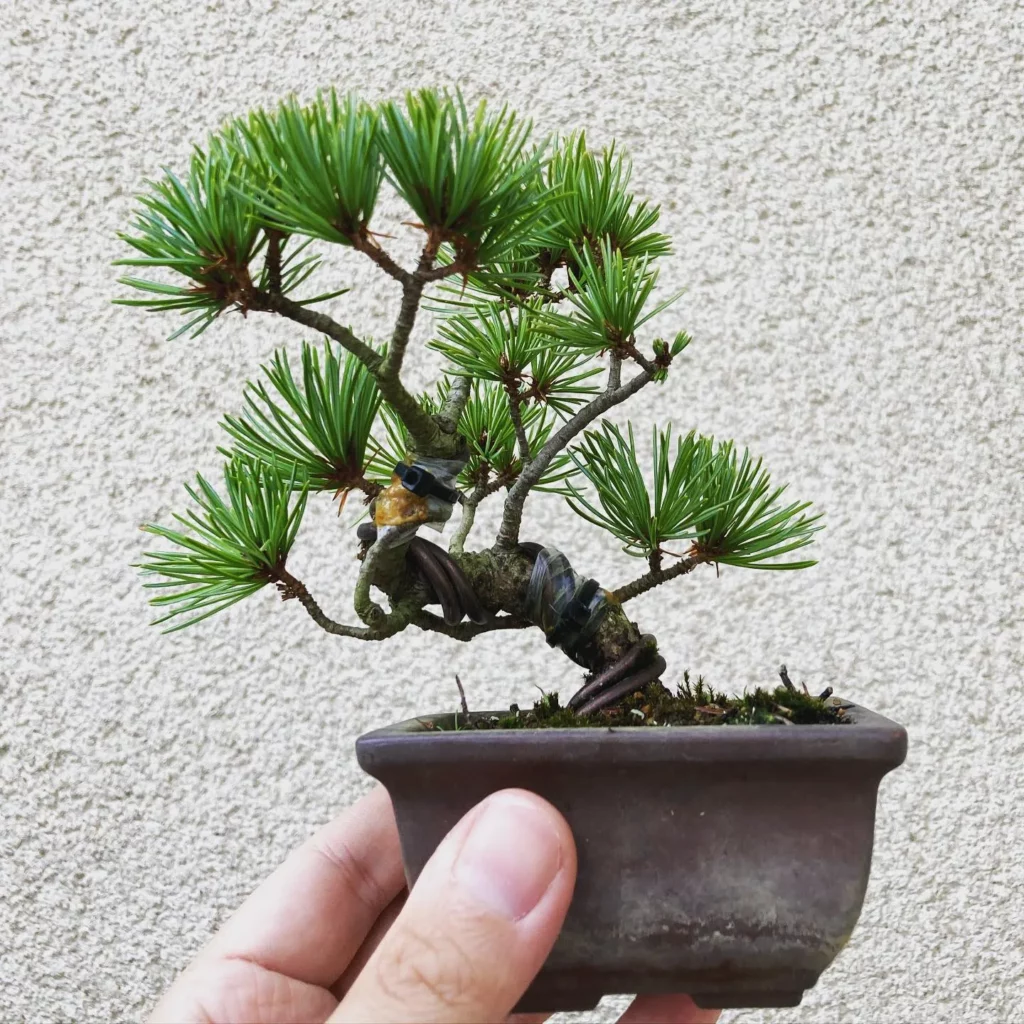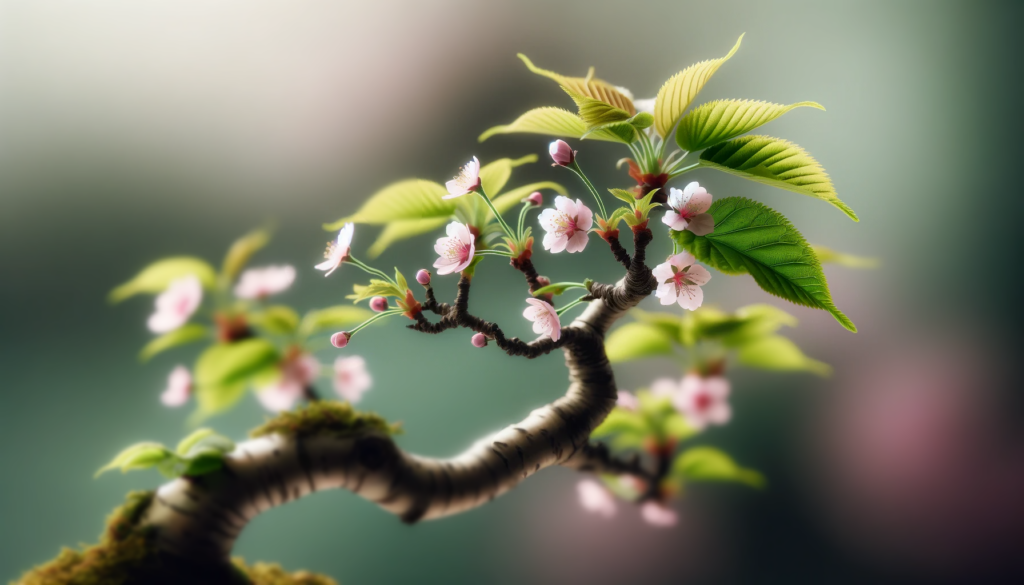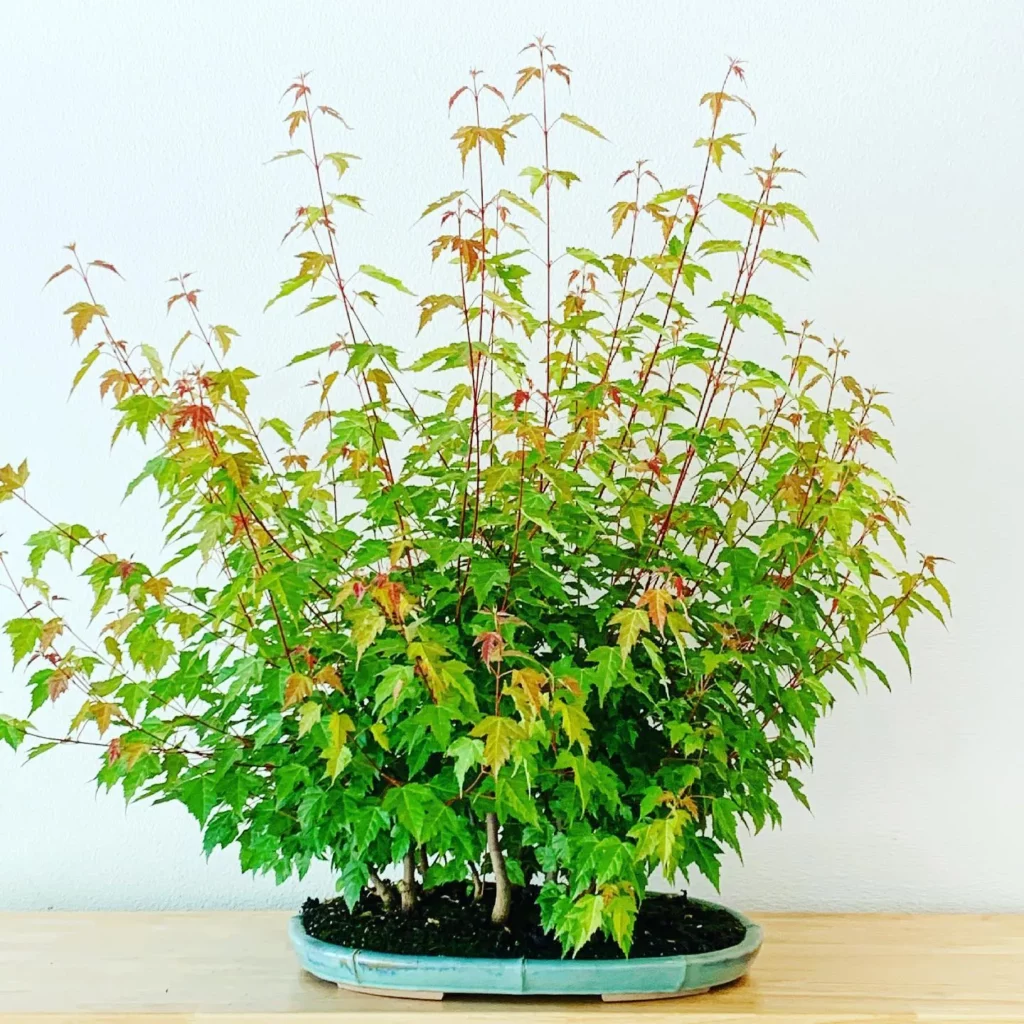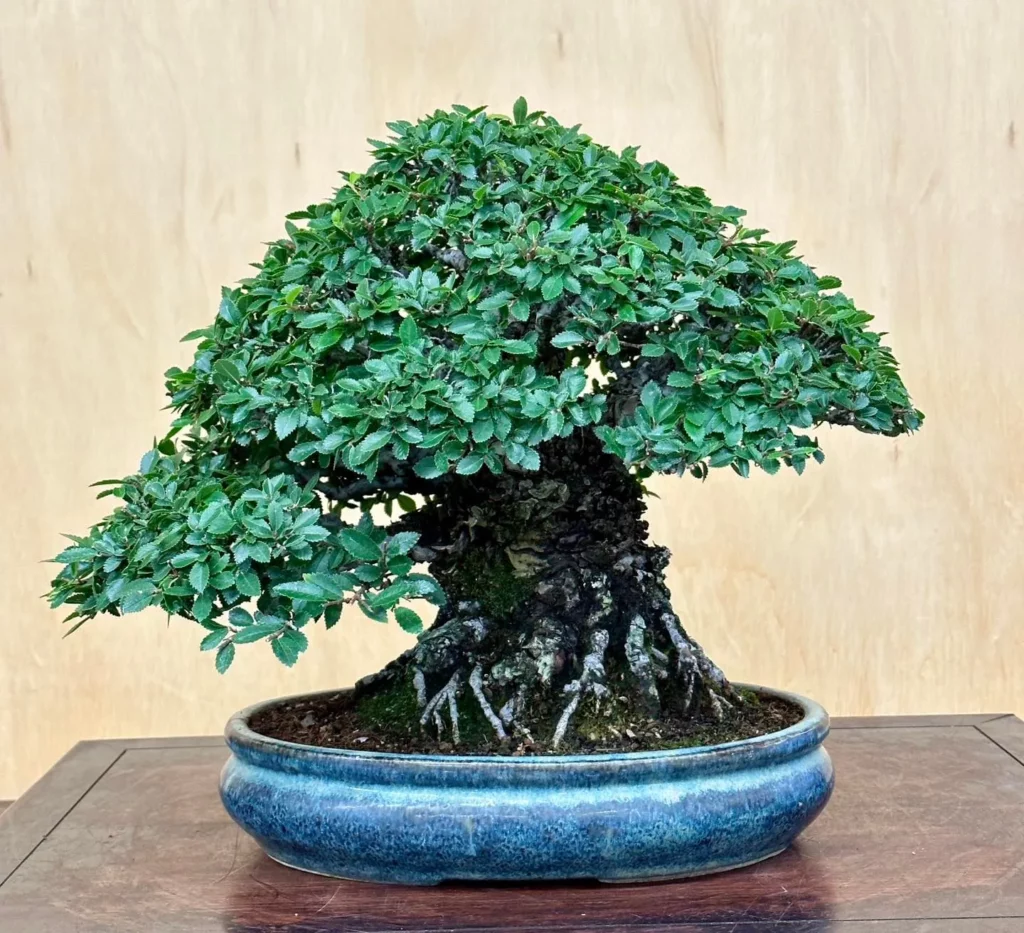If you’re a bonsai enthusiast, you know that caring for these miniature trees is both an art and a science. One of the key challenges in bonsai care is dealing with pests and diseases without causing harm to the delicate tree. That’s where beneficial insects come in. These tiny warriors can be your allies in the battle against pests, providing natural pest control without resorting to harmful pesticides.
When it comes to natural pest control in bonsai trees, beneficial insects are the superheroes of the miniature garden. Ladybugs, praying mantises, lacewings, and other beneficial insects feed on harmful pests like aphids, spider mites, and caterpillars, keeping their populations in check and your bonsai tree healthy and thriving. By harnessing the power of these incredible creatures, you can create a balanced and eco-friendly environment for your bonsai.
Discover how beneficial insects can transform your bonsai care routine by providing effective and natural pest control. Say goodbye to harmful pesticides and hello to a healthier, greener approach to bonsai care.
Explanation of Beneficial Insects for Bonsai

Beneficial insects play a vital role in maintaining the health of bonsai trees by controlling harmful pests. These insects can be classified into two categories: predators and parasites.
Predators
Predatory beneficial insects, such as ladybugs, praying mantises, lacewings, and assassin bugs, directly feed on harmful insects. These predators act as natural pest control agents, helping to control populations of pests like aphids, spider mites, caterpillars, and mealybugs that can cause damage to bonsai trees.
Parasites
Parasitic beneficial insects, such as certain wasps, employ a different strategy for pest control. These insects lay their eggs inside the bodies of pests. When the eggs hatch, the larvae feed on the host, ultimately leading to its demise. This method is particularly effective in controlling pests like scale insects and gypsy moth caterpillars without causing harm to the bonsai tree itself.
Importance of Bonsai Care

If you’re a bonsai enthusiast, you know that proper care is vital for the health and beauty of your bonsai trees. Bonsai care involves a combination of regular watering, pruning, and feeding to ensure the trees thrive in their miniature form. However, one often overlooked aspect of bonsai care is the use of beneficial insects for natural pest control.
By incorporating beneficial insects into your bonsai care routine, you can effectively manage pests without resorting to harmful pesticides. This not only promotes the longevity and health of your trees but also contributes to a safer and more eco-friendly environment.
When it comes to bonsai care, using natural pest control methods is essential. Beneficial insects like ladybugs, praying mantises, lacewings, and others play a crucial role in controlling populations of harmful pests that can damage bonsai trees.
Benefits of Beneficial Insects for Bonsai Care
- Beneficial insects act as natural predators or parasites, feeding on harmful pests without causing harm to the bonsai tree itself.
- Ladybugs, for example, are well-known predators that feed on aphids, spider mites, and other small insects that can damage bonsai trees.
- Praying mantises are another beneficial insect that can help control pests, including larger prey like caterpillars or grasshoppers.
- Lacewings are effective predators that feed on aphids, spider mites, and other small insects.
Why Choose Natural Pest Control for Bonsai Trees?
Opting for natural pest control methods, such as using beneficial insects, is a responsible choice for several reasons:
- Promoting tree health: Natural pest control methods help maintain the overall health of bonsai trees by reducing the presence of harmful pests that can cause damage.
- Avoiding harmful pesticides: By utilizing beneficial insects, you can eliminate the need for chemical pesticides, reducing the risk of harmful residues and protecting the environment.
- Creating a balanced ecosystem: Incorporating beneficial insects into your bonsai care routine helps establish and maintain a healthy and natural balance within the bonsai ecosystem.
Beneficial Insects for Bonsai Care

When it comes to caring for your bonsai trees, incorporating beneficial insects into your pest control strategy can be highly beneficial. These natural predators play an important role in maintaining the health and beauty of your bonsai trees, without resorting to harmful pesticides. Here are a few beneficial insects that you can introduce to your bonsai garden:
Ladybugs
Ladybugs are well-known predators that feed on aphids, spider mites, and other small insects that can damage your bonsai trees. These colorful insects can help maintain a balanced ecosystem by controlling pest populations naturally.
Praying Mantises
Praying mantises are another beneficial insect that can be effective in controlling pests, including larger prey like caterpillars or grasshoppers. These fascinating creatures are natural predators and can help keep your bonsai trees free from harmful pests.
Lacewings
Lacewings are beneficial insects that feed on aphids, spider mites, and other small insects. Their larvae are voracious predators that can quickly eliminate pest populations. Introducing lacewings to your bonsai trees can help ensure that harmful pests are kept at bay.
Common Pests in Bonsai Trees

Bonsai trees, like any other plants, are vulnerable to infestations by various pests that can undermine their health and beauty. Some of the common pests that can affect bonsai trees include spider mites, aphids, mealybugs, and scale insects. It is essential for bonsai enthusiasts to be aware of these pests and take appropriate measures to control their populations.
1. Spider Mites: Spider mites are tiny sap-sucking pests that can cause significant damage to bonsai trees. Infestations can be identified by the presence of yellowing or curling leaves and the formation of fine webbing. These pests can weaken the tree and make it more susceptible to other diseases.
2. Aphids: Aphids are another common pest that can infest bonsai trees. They feed on the sap of the tree, causing wilting and yellowing of leaves. Aphid infestations can also attract ants and lead to the formation of sooty mold, affecting the overall health and appearance of the tree.
3. Mealybugs: Mealybugs are small, white insects that feed on the sap of bonsai trees. They often congregate in clusters, causing leaf yellowing, wilting, and stunted growth. Mealybug infestations can weaken the tree and make it more susceptible to other pests and diseases.
4. Scale Insects: Scale insects are tiny pests that attach themselves to the stems and leaves of bonsai trees. They feed on the plant’s sap, causing yellowing and wilting of leaves. Scale insect infestations can also produce a sticky residue called honeydew, which can attract ants and promote the growth of sooty mold.
Natural Remedies for Spider Mites
Spider mites can wreak havoc on your bonsai trees, but you don’t have to resort to harsh chemicals to get rid of them. There are several natural remedies that can effectively control spider mite infestations and help keep your bonsai trees healthy.
1. Gentle Washing with Water
One simple and effective method is to wash your bonsai tree with a gentle spray of water from a garden hose. This can help dislodge and remove spider mites from the tree’s foliage. Make sure to focus on the undersides of the leaves, as that’s where the mites often hide.
2. Neem Oil
Neem oil is a powerful natural pesticide and growth regulator. It can effectively control spider mites and prevent them from reproducing. Dilute the neem oil with water according to the instructions on the product label, and then spray it onto the affected areas of your bonsai tree. Neem oil is safe for most plants and poses minimal risk to beneficial insects.
3. Beneficial Insects
Introducing beneficial insects into your bonsai garden can also help control spider mite infestations. Ladybugs, praying mantises, and lacewings are natural predators that feed on spider mites and other pests. You can purchase these beneficial insects and release them onto your bonsai tree to establish a natural balance and minimize spider mite populations.
Natural Remedies for Aphids
Aphids can be a common problem for bonsai trees, but there are natural remedies that can help you control these pests without resorting to chemical pesticides. These remedies are safe, eco-friendly, and gentle on your bonsai tree.
Insecticidal Soap
An effective natural remedy for aphids is insecticidal soap. This soap breaks down the cell membranes of the aphids, ultimately leading to their demise. It is important to use a soap specifically formulated for plants to ensure it is safe for your bonsai tree. Simply follow the instructions on the packaging, dilute the soap in water, and apply it to the affected areas of your tree.
Companion Planting
Another natural way to deter aphids is through companion planting. Certain plants like chives, garlic, or marigolds are known to repel aphids due to their strong scents. By planting these companion plants around your bonsai tree, you can create a natural barrier that helps keep aphids away.
Garden Hose Spray
No products found.
If you notice a small number of aphids on your bonsai tree, a strong spray of water from a garden hose can help dislodge and remove them. This method is best for minor infestations and can be effective in knocking off the aphids from your tree.
Bonsai Care Guide
To properly care for your bonsai tree, you’ll need a set of specific tools. These tools are essential for shaping, maintaining, and keeping your bonsai tree healthy and beautiful.
Pruning Shears
One of the most important tools in bonsai care is a pair of pruning shears. These shears are designed to trim and shape the branches of your bonsai tree. They are sharp and precise, allowing you to make clean cuts. Pruning shears can handle branches up to 1/4 inch thick, making them ideal for maintaining the delicate structure of your bonsai tree.
Wire Cutters
Wire cutters are another essential tool for bonsai enthusiasts. These cutters are specifically designed to cut through the wires used to hold branches in place. As you shape and style your bonsai tree, you may need to remove or adjust the wires. Wire cutters make this task easy and ensure that you don’t damage the tree in the process.
Concave Cutters, Branch Benders, and Root Hooks
No products found.
In addition to pruning shears and wire cutters, other tools can help you take care of your bonsai tree. Concave cutters are used to make more precise cuts on branches, allowing for faster healing and minimizing scarring. Branch benders help you shape the structure of your bonsai tree by gently bending branches into the desired position. Root hooks are used for repotting your bonsai tree, allowing you to carefully remove the root ball without causing damage.
Neem Oil: A Natural Pest Control Solution for Bonsai Trees
Neem oil is a powerful and eco-friendly solution for controlling pests in your bonsai trees. Derived from the neem tree, this all-natural and organic oil contains a compound called azadirachtin, which effectively protects your trees from damaging insects.
One of the key benefits of neem oil is its ability to disrupt the feeding, reproduction, and flight of insects, thereby neutralizing their ability to spread and cause harm. This makes neem oil a highly effective pest control solution for pesky invaders such as aphids, spider mites, caterpillars, fleas, and ticks.
Another advantage of using neem oil is its non-toxic nature. It is completely safe for humans, mammals, and birds, making it an ideal choice for those who prioritize the health and well-being of their bonsai trees and the environment.
Neem oil can be used both as a treatment for existing pest infestations and as a preventive measure against future ones. Its versatility extends beyond bonsai trees and can also be applied to houseplants, offering a holistic approach to pest control in your indoor garden.
To apply neem oil as a pest control solution for your bonsai, simply mix it with water according to the package instructions and spray the solution onto the affected foliage. It is important to thoroughly cover both the upper and lower surfaces of the leaves, as pests often hide in hard-to-reach areas.
Using neem oil regularly, especially during the growing season, can help ensure the long-term health and vitality of your bonsai trees by effectively controlling and preventing pest infestations.
No products found.
Biocontrol: Using Friendly Bugs for Bonsai Pest Control
When it comes to pest control for your bonsai trees, you don’t necessarily have to rely on harmful pesticides. Biocontrol, also known as biological control, offers a natural and eco-friendly solution by utilizing living organisms to manage pest populations. Friendly bugs, such as ladybugs and lacewings, can be instrumental in deterring harmful pests and reducing the need for chemical interventions.
While it’s true that bonsai trees may still encounter pests that require treatment, it’s important to note that not all bugs are harmful. In fact, many bugs are harmless and can even benefit your bonsai ecosystem. The presence of bugs on your bonsai trees is normal, and as long as the infestation isn’t severe, there’s no cause for concern.
By embracing biocontrol methods and allowing nature to take its course, you can maintain a healthy balance in your bonsai garden. Instead of panicking at the sight of bugs, consider them as part of the natural ecosystem and an ally in your pest control efforts. Let the friendly bugs do their job and help your bonsai trees thrive.
After this check out our other articles on:
FAQ
What are beneficial insects for bonsai trees?
Beneficial insects are natural predators or parasites that feed on harmful pests without harming the bonsai tree. Ladybugs, praying mantises, lacewings, and other beneficial insects can help control populations of aphids, spider mites, caterpillars, and other pests that can damage bonsai trees.
How do beneficial insects control pests in bonsai trees?
Beneficial insects can be divided into two categories: predators and parasites. Predators, such as ladybugs, praying mantises, lacewings, and assassin bugs, feed on harmful insects directly. Parasitic beneficial insects, like certain wasps, lay their eggs inside the bodies of pests. The eggs hatch into larvae that feed on the host, eventually killing it. Both predators and parasites can be effective in controlling pests without causing harm to the bonsai tree.
Why is bonsai care important?
Bonsai care is crucial for maintaining the health and aesthetics of bonsai trees. Regular watering, pruning, and feeding are essential aspects of bonsai care. Using beneficial insects as a natural pest control method is also important to promote a healthy bonsai garden without resorting to harmful pesticides.
How can beneficial insects help with bonsai care?
Beneficial insects, such as ladybugs, praying mantises, and lacewings, can be introduced to bonsai trees to help control pests. They feed on aphids, spider mites, and other small insects that can damage bonsai trees. By introducing these beneficial insects, bonsai enthusiasts can maintain the health and aesthetics of their trees in a natural and eco-friendly way.
What are common pests in bonsai trees?
Bonsai trees are susceptible to infestations by various pests, including spider mites, aphids, mealybugs, and scale insects. Spider mites are tiny sap-sucking pests that can cause damage to bonsai trees. Aphids, another common pest, feed on the sap of the tree, causing wilting and yellowing of leaves. It is important to be aware of these pests and take appropriate measures to control their populations.
How can spider mites be controlled naturally in bonsai trees?
Spider mites can be controlled using natural remedies. Washing the tree with a gentle spray from a garden hose can help remove the mites. Neem oil, derived from the neem tree, is another effective natural remedy that acts as a pesticide and growth regulator. Introducing beneficial insects like ladybugs, praying mantises, and lacewings can also help control spider mite infestations.
How can aphids be controlled naturally in bonsai trees?
Aphids can be controlled using natural remedies. Insecticidal soap, which breaks down the cell membranes of the aphids, is an effective natural remedy. Planting certain plants like chives, garlic, or marigolds around the bonsai tree can also help deter aphid infestations. Using a strong spray of water from a garden hose can also knock off the aphids from the tree.
What tools are necessary for bonsai care?
Pruning shears, wire cutters, concave cutters, branch benders, and root hooks are essential tools for bonsai care. Pruning shears are used for shaping and maintaining the bonsai tree, while wire cutters are necessary for cutting wires used to hold branches in place. Other tools like concave cutters, branch benders, and root hooks are used for more specialized bonsai care tasks.
How can neem oil be used for pest control in bonsai trees?
Neem oil is an all-natural and organic solution for pest control in bonsai trees. It contains a compound called azadirachtin, which effectively protects the tree from damaging insects. Neem oil disrupts the feeding, reproduction, and flight of insects, neutralizing their ability to spread. It is non-toxic to humans, mammals, and birds and can be used to treat existing pest infestations and prevent new ones.
What is biocontrol and how can it be used for bonsai pest control?
Biocontrol, or biological control, is the use of living organisms such as insects or pathogens to control pest populations. Friendly bugs, like ladybugs or lacewings, can be beneficial in bonsai pest control. They can help deter harmful pests and reduce the need for chemical pesticides. Using biocontrol methods and allowing nature to take its course can help maintain a healthy balance in the bonsai ecosystem.




